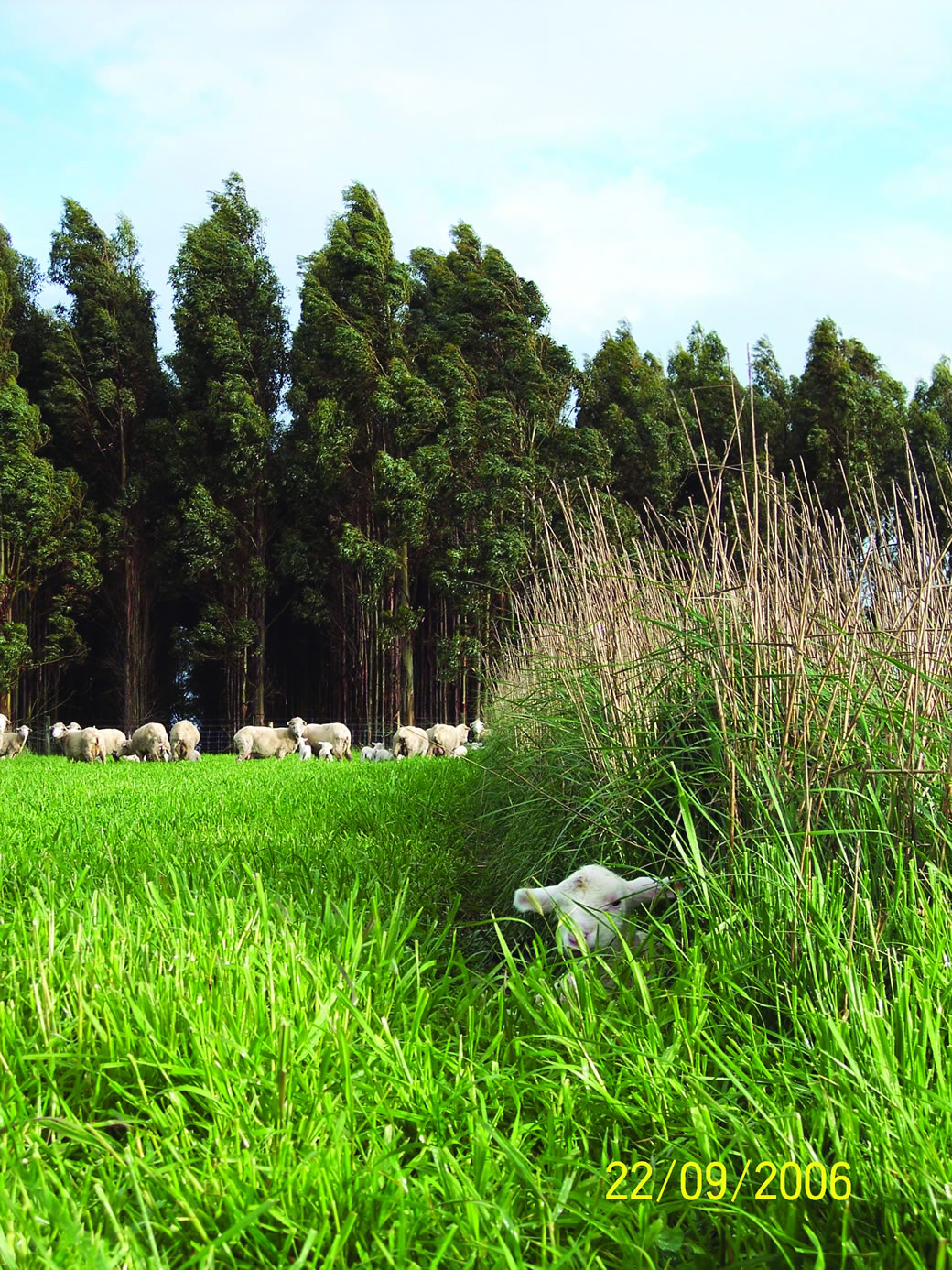Shelter for lamb survival experiment
In South West Victoria, the greatest number of farm flocks lamb between June to September. It can be cold, wet and windy at this time of year. In combination, these factors create a high risk of chill which can lead to low lamb survival.
Twins are more susceptible to poor lambing weather than singles; they expend more energy to maintain their body temperature due to their smaller size and larger surface area. In high risk areas, survival of less than 40% of twins has been observed. Singles are resilient, so to improve marking percentages, the focus needs to be on improving the survival of twin born lambs.
At the Hamilton EverGraze research site, hedges of tall wheatgrass (Thinopyrum ponticum cv Tyrell) were set up in a north-south direction, at right angles to the direction of the prevailing westerly winds. A high quality perennial ryegrass with sub-clover pasture was also sown between the hedgerows to provide high quality feed, thereby providing ‘maternity wards’ for lambing ewes.
The experiment determined the effect of the shelter on survival of lambs derived from Coopworth Composite and Merino ewes, and from single and multiple births. Similar research was conducted at Wagga Wagga Proof Site comparing the use of shrubs and hession shelter. Modelling was used to determine the potential for shelter to improve lamb survival in a range of environments.
Results can be found on the Shelter improves lamb survival page.


